
-
Trifluoroethyl Methacrylate CAS NO.352-87-4 as Silicone origin from China.
Name: Trifluoroethyl Methacrylate CAS No.: 352-87-4 Molecular formula: C6H7F3O2 Molecular weight (g/mol): 168 Physical property constant: b. p.107 ℃ Appearance: Transparent liquid, chromaticity (APHA): ≤ 20 Purity: ≥ 99.5% Moisture,%: ≤ 0.30 Acid value, mg (KOH)/g: ≤ 0.10 Polymerization inhibitor (MEHQ), ppm: 100 ± 10 (or added according to customer requirements) Packaging: 200 kg/barrelTags : Trifluoroethyl Methacrylate CAS NO.352-87-4 1,1-Dihydroperfluoroethyl methacrylate CAS NO.352-87-4 2,2,2-Trifluoroethyl methacrylate CAS NO.352-87-4 2,2,2-trifluoroethyl 2-methylprop-2-enoate CAS NO.352-87-4 C3H6BrF CAS 352-87-4
-
2,2,2-Trifluoroethanol CAS NO.75-89-8 as Silicone origin from China.
Name: 2,2,2-Trifluoroethanol CAS No.: 75-89-8 Molecular formula: C2H3OF3 Molecular weight (g/mol): 100 Physical property constant: m.p.-43.5 ℃, b.p.73.6 ℃ Appearance: Colorless transparent liquid Purity: ≥ 99.9% Moisture content: ≤ 0.1% PH value: 5-7 Packaging: 250 kg/barrelTags : 2,2,2-Trifluoroethanol CAS NO.75-89-8 Trifluoroethanol CAS NO.75-89-8 Trifluroroethyl alchohol CAS NO.75-89-8 1,1,2-trifluoroethanol CAS NO.75-89-8 2,2,2-Trifluoroethanol CAS 75-89-8 C2H3F3O
-
Hexamethyldisiloxane CAS:107-46-0
Introduction: Hexamethyldisiloxane (silicone ether, MM sealing agent) is a colorless and transparent liquid that is prone to deliquescence. Insoluble in water, soluble in various organic solvents. Used as silicone oil, silicone rubber, pharmaceuticals, gas chromatography stationary liquids, analytical reagents, hydrophobic agents, etc. Obtained by hydrolysis of trimethylchlorosilane. The physical properties of hexamethyldisiloxane colorless and transparent liquids. Easily deliquescent, flammable, and in contact with high heat, open flames, and strong oxidizing agents, there is a risk of combustion. Boiling point 99.5 ℃. Flash point -1.1 ℃. Relative density (d2525) 0.7606. The refractive index is 1.3750. Insoluble in water, soluble in various organic solvents. Hexamethyldisiloxane is an important primary organic silicon raw material, often used as a capping agent in the production of silicone oil, or as a cleaning agent for silicone rubber, pharmaceuticals, gas chromatography stationary liquids, analytical reagents, hydrophobic agents, and medical electronic components. The Si O-Si bond in the molecular chain structure of hexamethyldisiloxane has a high chemical bond energy (460 5 kJ/mol), the polysiloxane prepared from it as a sealing agent has good thermal and chemical stability.Tags : Hexamethyldisiloxane CAS:107-46-0 METHYL Hexamethyldisiloxane from factory Organic silicon primary raw material capping agent
-
Hexamethyldisilane CAS:1450-14-2 (HMD)
Properties of Hexamethyldisilane Melting point 9-12 ° C (lit.) Boiling point 112-114 ° C (lit.) Density 0.715 g/mL at 25 ° C (lit.) Refractive index n20/D 1.422 (lit.) Flash point 29 ° F Storage conditions Store at<=20 ° C Sol common organic solvents; Insul H2O Form liquid Specific gravity 0.729 Colorless Insoluble in water Double in alcohol, ether and acetone Hydrolysis sensitivity 1: no significant reaction with acute systems BRN 1633463 Stability InchiKey NEXSMEBSBIABKL-UHFFFAOYSA-N CAS Database 1450-14-2 (CAS DataBase Reference) NIST Chemical Substance Information Disilane, hexagonal - (1450-14-2) EPA Chemical Substance Information Disilane, hexagonal - (1450-14-2)Tags : Hexamethyldisilane CAS:1450-14-2 HMD Factory direct sales Hexamethyldisilane fast delievery Hexamethyldisilane Quality service Hexamethyldisilane
-
Iodotrimethylsilane CAS:16029-98-4 (TMIS)
Properties of trimethyliodosilane Melting point<0 ° C Boiling point 106 ° C (lit.) Density 1.406 g/mL at 25 ° C (lit.) Refractive index n20/D 1.471 (lit.) Flash point − 25 ° F Storage conditions -20 ° C Solubility Reacts Form Liquid Specific gravity 1.47 Clear colors to reddish Water solubility reactions Sensitivity: Moisture&Light Sensitivity Hydrolysis sensitivity 8: Reacts quickly with moisture, water, protoc solvents BRN 1731136 Stability Sensitivity (Reactive) InchiKey CSRZQMIRAZTJOY-UHFFFFAOYSA-N CAS Database 16029-98-4 (CAS DataBase Reference) NIST Chemical Information Iodotrimethylsilane (16029-98-4) EPA Chemical Information Silane, iodotrimethyl - (16029-98-4)Tags : CAS:16029-98-4 TMIS Iodotrimethylsilane fast delievery Iodotrimethylsilane factory direct sale Iodotrimethylsilane quality service Iodotrimethylsilane
-
Dimethyldimethoxysilane CAS1112-39-6 DMDMS
Specification English name: Dimethyldimethoxysilane CAS number: 1112-39-6 Molecular formula: C4H12O2Si Molecular weight: 120.22 EINECS number: 214 189 4 Mol file: 1112-39-6.mol Applications As a structural control agent, chain extender, and filler treatment agent, it is widely used in the treatment of organic silica gel and white carbon black Purpose As a structural control agent, chain extender, and filler treatment agent, it is widely used in the treatment of organic silica gel and white carbon black. This product is used as a structural control agent and chain extender to improve mechanical processing performance, extend the storage time of rubber blends, and can replace hydroxyl silicone oil for use. Widely used in the treatment of organic silicone and white carbon black Purpose Dimethyldimethoxysilane is used as a structural control agent and chain extender to improve mechanical processing performance, extend the storage time of rubber blends, and can replace hydroxy silicone oil. Widely used in the treatment of organic silicone and white carbon black.Tags : Dimethyldimethoxysilane CAS1112-39-6 DMDMS fast delievery Dimethyldimethoxysilane factory direct sale Dimethyldimethoxysilane quality service Dimethyldimethoxysilane
-
Dimethyldiethoxysilane CAS:78-62-6
Specification Melting point -97 ° C Boiling point 114 ° C (lit.) Density 0.865 g/mL at 25 ° C (lit.) Vapor pressure 7-7910Pa at 20-25 ℃ Refractive index n20/D 1.381 (lit.) Flash point 53 ° F Storage conditions Flammables area Form liquid Specific gravity 0.939 Color ≤ 25 (APHA) Water solubility may be degraded Sensitivity Hydrolysis sensitivity 7: Reacts slowly with moisture/water BRN 1736110 LogP -0.4-3 at 25 ℃ Applications Diethoxydimethylsilane (DMDES) can be used to modify the surface of epoxy resins, as well as pure silica and Pd/SiO2 hydrogen sensors. It can also be used as a precursor for the synthesis of polydimethylsiloxane and form anti-corrosion coating composite materials with water-based polyurethane. Purpose Used as a structural control agent in the preparation of silicone rubber, a chain extender in the synthesis of silicone products, and a raw material for silicone oil synthesis. It is an important raw material for the production of silicone resin, benzyl silicone oil, and waterproofing agents. At the same time, it is easy to hydrolyze and can form alkali metal silanols with alkali metal hydroxides. And it can also be used as a crosslinking agent for room temperature vulcanized silicone rubber. Purpose Used as a raw material for chemical reagents and the synthesis of polymer organosilicon compounds.Tags : CAS:78-62-6 Dimethyldiethoxysilane factory direct sale Dimethyldiethoxysilane fast delievery Dimethyldiethoxysilane DMDES quality service Dimethyldiethoxysilane
-
Trimethylethoxysilane CAS :1825-62-3
Name: Ethoxytrimethylsilane CAS number: 1825-62-3 Molecular formula: C5H14OSi Molecular weight: 118.25 EINECS number: 217-370-6 Mol file: 1825-62-3.molTags : Trimethylethoxysilane TMES CAS :1825-62-3 Trimethylethoxysilane from factory factory direct sale Trimethylethoxysilane
-
Trimethylchlorosilane (TMCS) CAS :75-77-4
Name: Chlorotrimethylsilane CAS number: 75-77-4 Molecular formula: C3H9ClSi Molecular weight: 108.64 EINECS number: 200-900-5 Mol file: 75-77-4.molTags : Trimethylchlorosilane CAS :75-77-4 TMCS Trimethylchlorosilane from factory Cost price Trimethylchlorosilane High purity Trimethylchlorosilane
-
Hexamethyldisilylurea CAS:18297-63-7 (BSU )
Name: 1,3-Bis (trimethylsilyl) urea CAS number: 18297-63-7 Molecular formula: C7H20N2OSi2 Molecular weight: 204.42 EINECS number: 242-177-9 Mol file: 18297-63-7.molTags : BSU CAS:18297-63-7 Hexamethyldisilylurea High pruity Hexamethyldisilylurea Cost price Hexamethyldisilylurea Hexamethyldisilylurea from factory
-
Sodiumhexamethyldisilazane CAS :1070-89-9 (CAS :1070-89-9)
Name: Sodium bis (trimethylsilyl) amide CAS number: 1070-89-9 Molecular formula: C6H18NNaSi2 Molecular weight: 183.37 EINECS number: 213 983-8 Mol file: 1070-89-9.molTags : Sodiumhexamethyldisilazane NAHMDZ CAS :1070-89-9 Cost price Sodiumhexamethyldisilazane High quality Sodiumhexamethyldisilazane Sodiumhexamethyldisilazane from Factory
-
Tetramethyldisiloxane (TMDSO) CAS :3277-26-7
Name: 1,1,3,3-Tetramethyldisiloxane CAS number: 3277-26-7 Molecular formula: C4H14OSi2 Molecular weight: 134.32 EINECS number: 221-906-4 Mol file: 3277-26-7.molTags : TMDSO Tetramethyldisiloxane CAS :3277-26-7 factory price Tetramethyldisiloxane raw material Tetramethyldisiloxane High quality Tetramethyldisiloxane
 call us :
call us :  send a message :
send a message : 









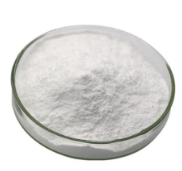
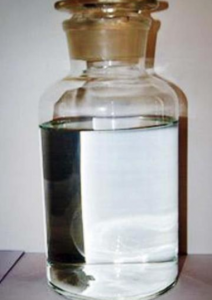
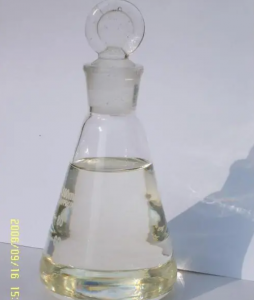
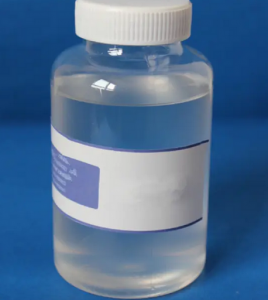
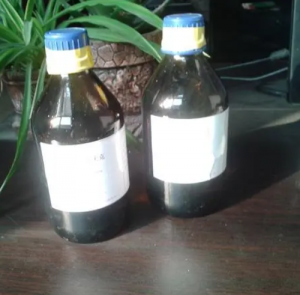
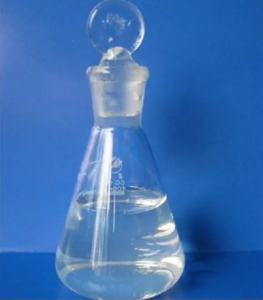
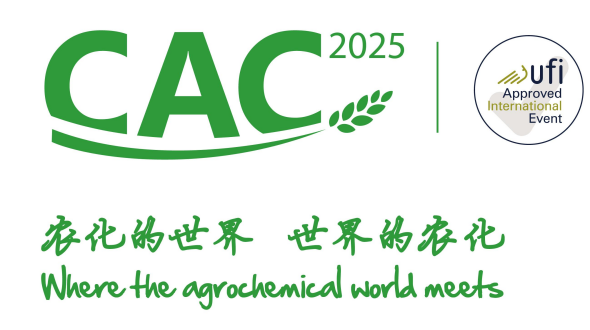













 online service
online service +8613866722531
+8613866722531

 +8613866722531
+8613866722531